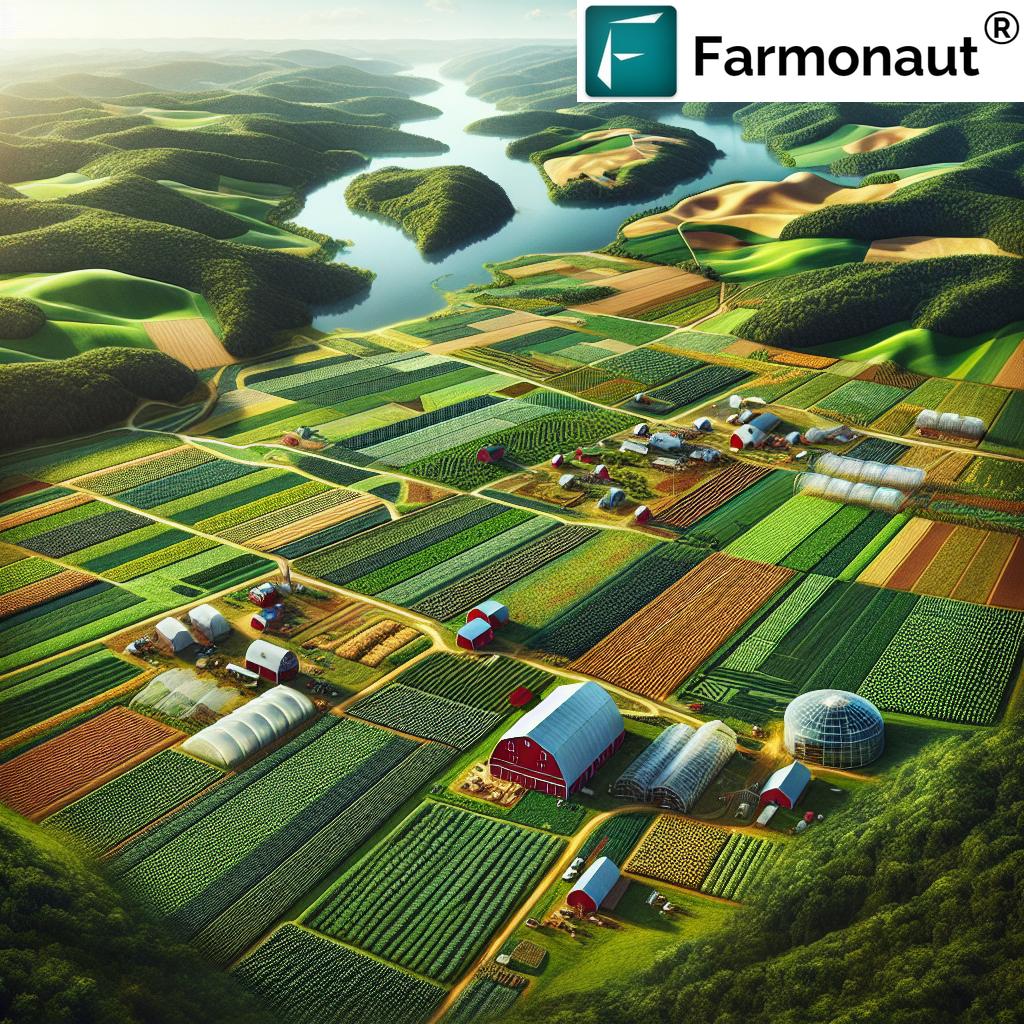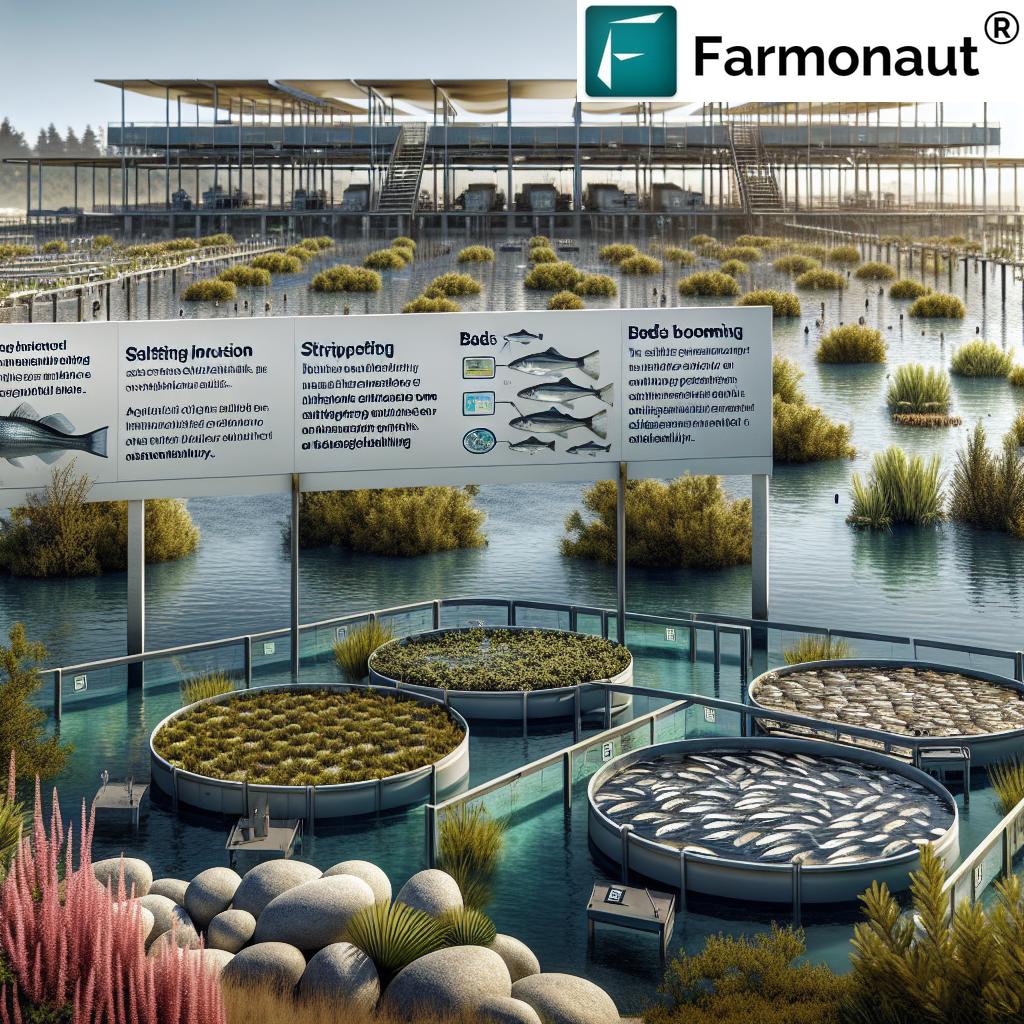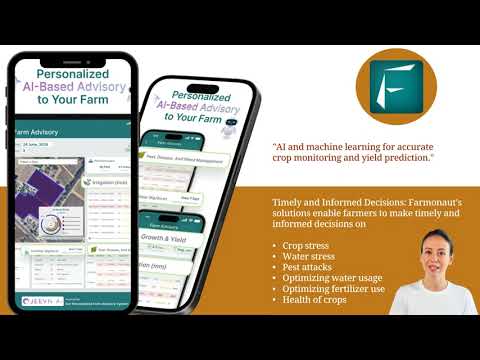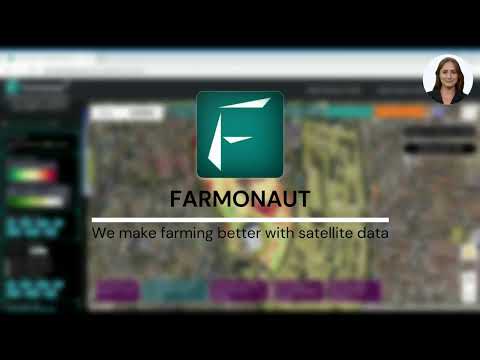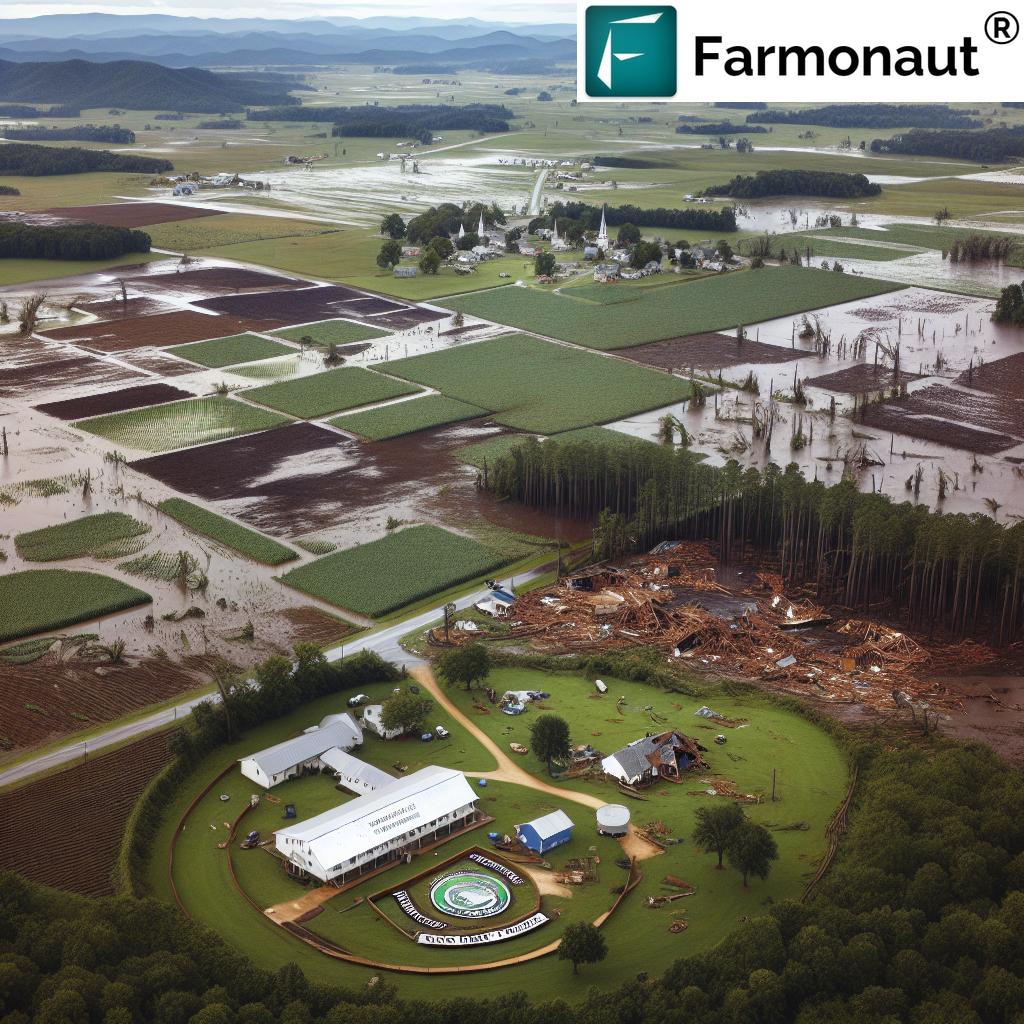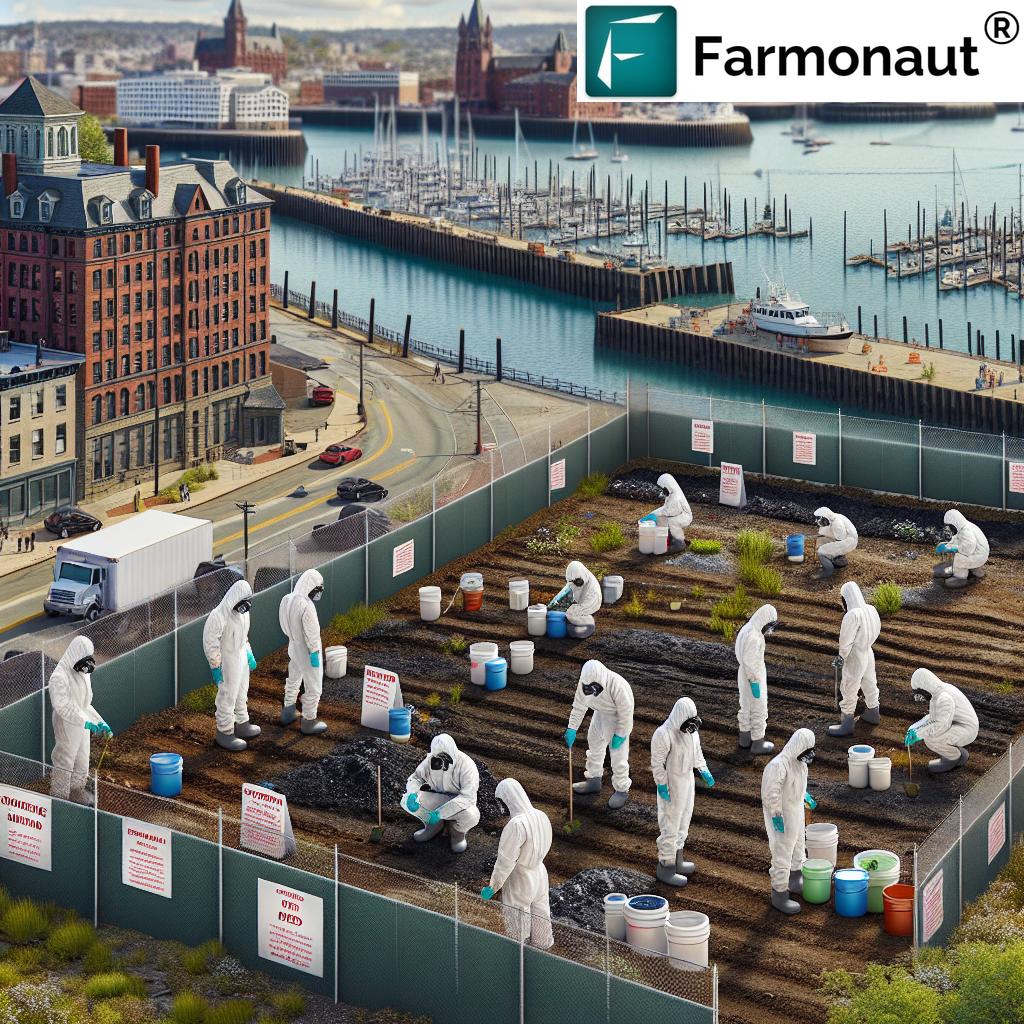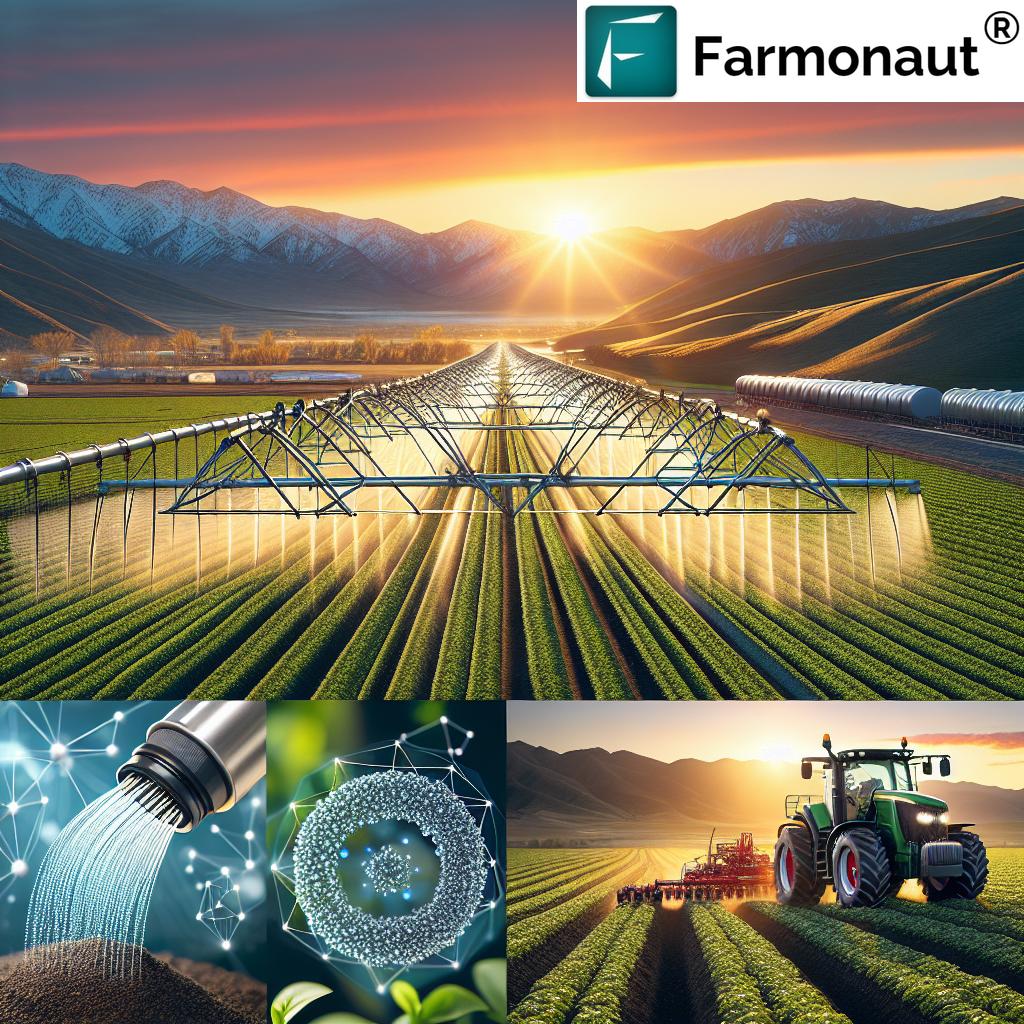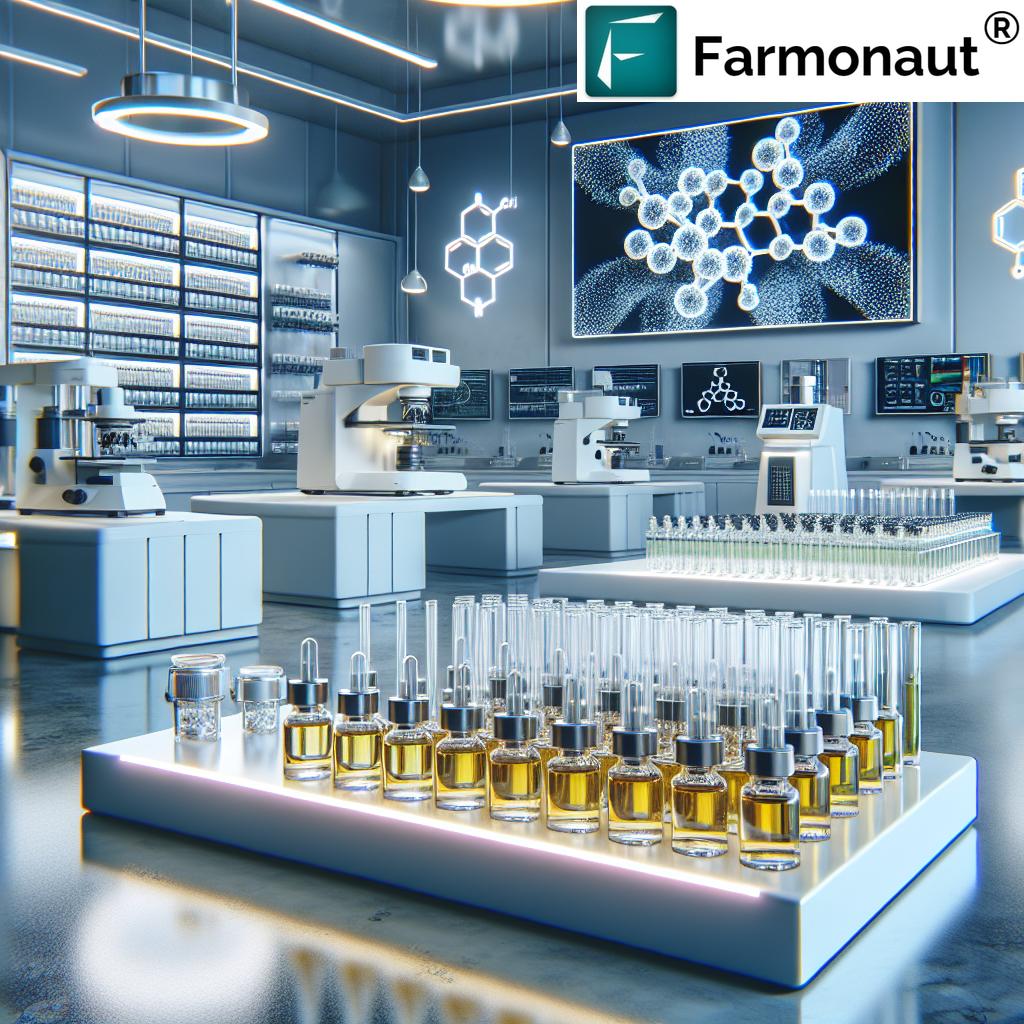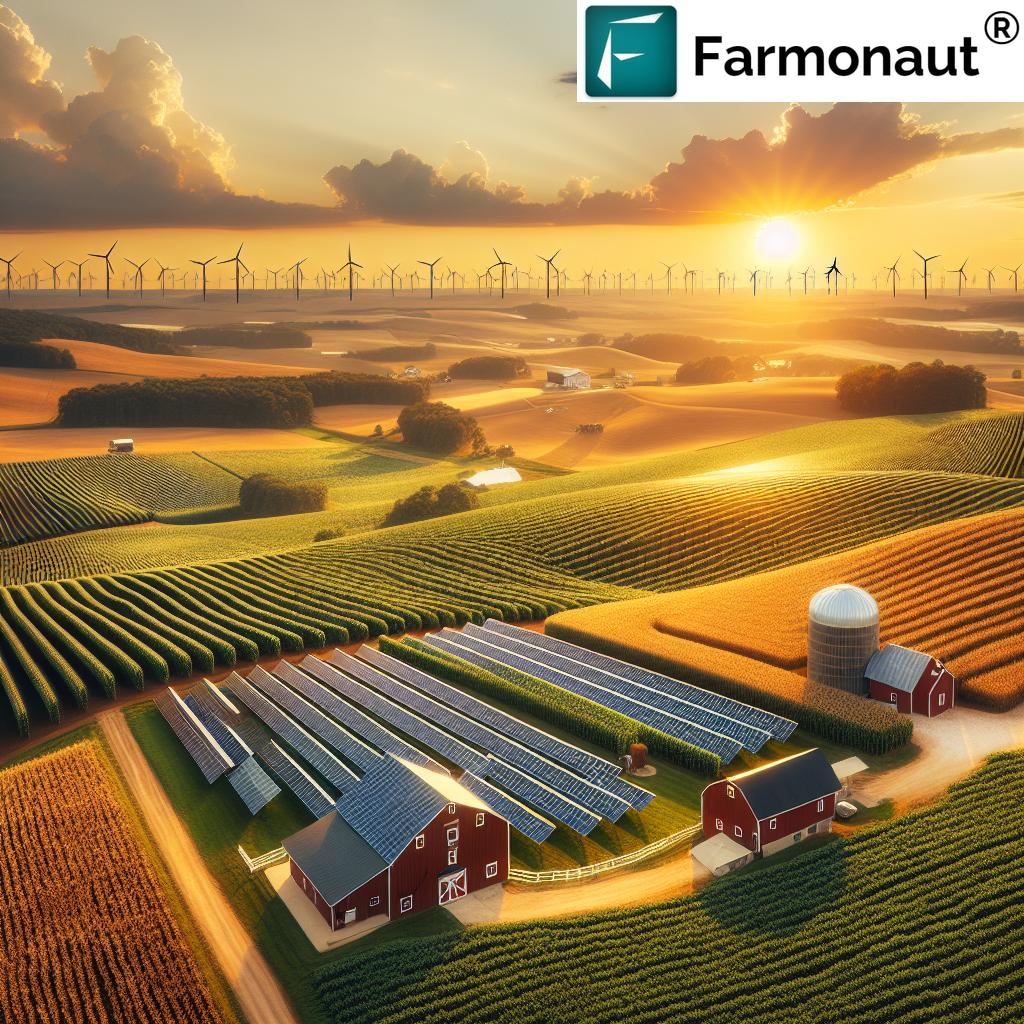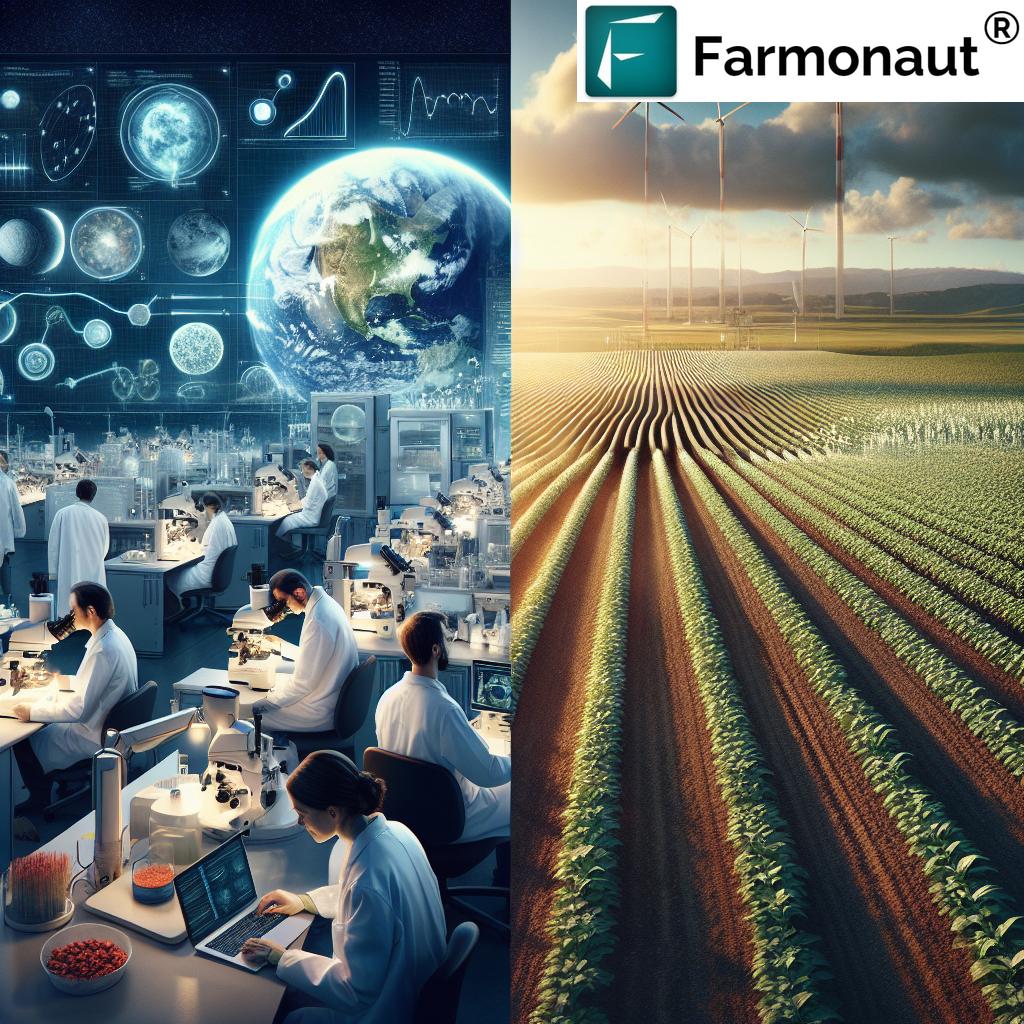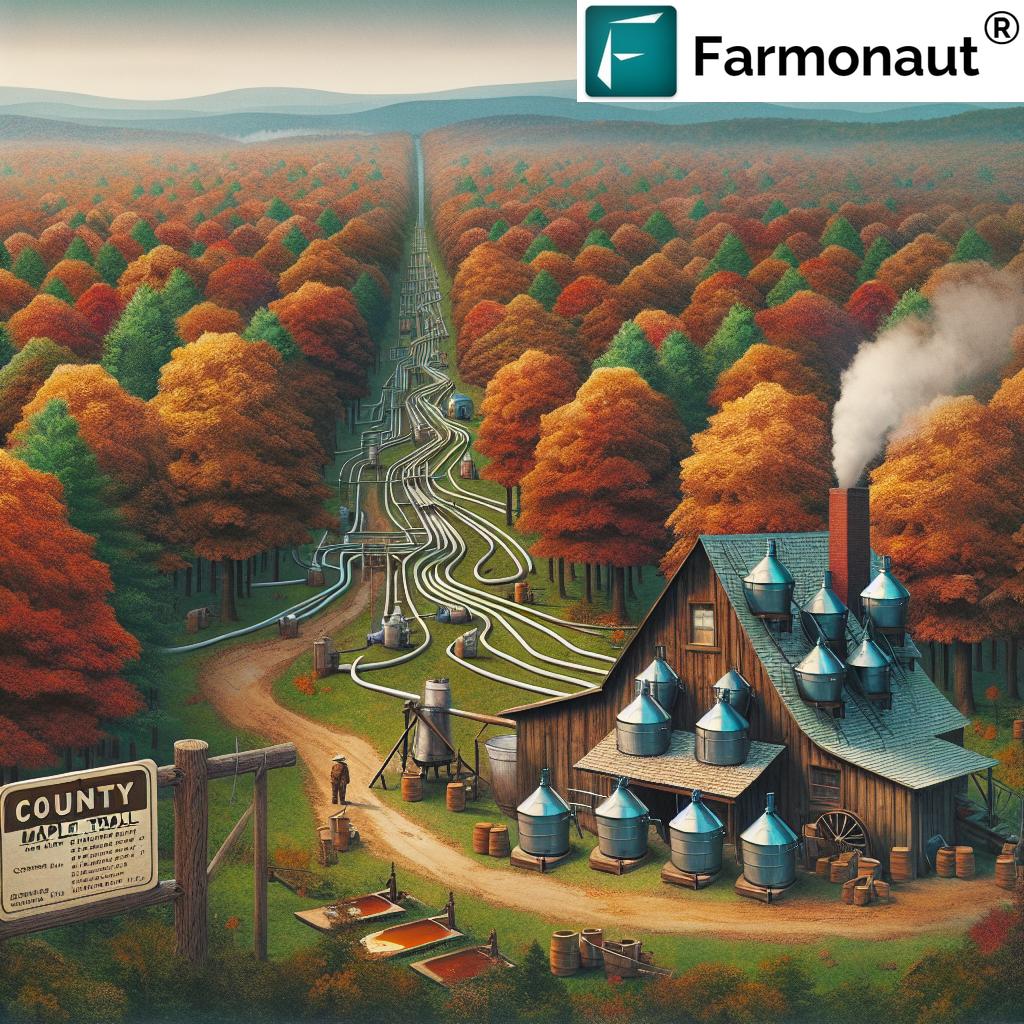Farming in Maryland: 2024 Sustainable Growth & Diverse Crops
Agriculture in Maryland 2024 is defined by diverse crops, resilient farming practices, and a steadfast commitment to sustainability and innovation. As we explore the current landscape, rich history, and future prospects of Maryland farming, we discover how this pivotal sector not only sustains our economy but also shapes the state’s environment, communities, and cultural identity.
“Maryland boasts over 12,000 farms in 2024, with 20% practicing certified organic and sustainable agriculture.”
Historical Overview: Maryland’s Agricultural Evolution
Our journey through Maryland agriculture must begin with its rich history. Since the founding of the state in 1634, farming has served as a cornerstone of Maryland’s economy and shaped its cultural identity. Over the centuries, the state’s farming landscape evolved from a singular focus on one crop—tobacco—to the diverse, sustainable, and resilient agricultural sector we witness today.
- 17th–18th Century: Tobacco was Maryland’s economic lifeblood and primary export, fueling both local prosperity and international trade.
- 19th Century: With the nation’s expansion and agricultural innovation, grains such as wheat and corn rose to prominence, establishing Maryland as an important and valuable exporter.
- Late 19th Century–Today: The farming sector diversified further to include not only additional crops, but also dairy, livestock, honey production, horticulture, nurseries, poultry, wineries, and vineyards.
This historical overview shapes how we interpret Maryland farming in 2024, illuminating a sector that both reflects its proud history and embraces innovative, sustainable practices.
Maryland Agriculture 2024: Current Landscape & Key Facts
As we look at agriculture in Maryland 2024, it’s clear the state boasts one of the most diverse and robust agricultural sectors in the Mid-Atlantic region. We see an array of crops, livestock operations, and innovative practices underpinning Maryland’s rural vibrance and collective identity.
- Number of Farms: 12,600 (2024)
- Total Agricultural Land: Roughly 2 million acres (32% of state’s total area)
- Average Farm Size: 159 acres
- Market Value of Ag Products: Nearly $3.4 billion
- Key Sectors: Crops, livestock, poultry, honey, horticulture, aquaculture
Maryland’s current agricultural landscape is characterized by diversity—from thriving grain fields in the Piedmont, to vegetable patches on the Eastern Shore, to bustling aquaculture near Chesapeake Bay. Our farms range from small organic plots to large family-operated enterprises, all contributing significantly to the Maryland farm economy.
Diverse Crops & Livestock Grown in Maryland
Maryland crops and livestock embody extraordinary diversity. The state is not only a significant producer of grains but also excels in dairying, poultry, fruits, vegetables, nursery, and aquaculture products. Let’s explore these sectors in greater depth:
Grains & Field Crops
- Corn & Soybeans: The backbone of our cropping systems, primarily grown in central and southern Maryland. Used both as feed and for valuable export markets.
- Wheat & Barley: Key grains grown throughout the state, with high yields and continuous adaptation to sustainable cultivation practices.
Vegetables, Fruits & Specialty Crops
- Vegetables: Over 25 different varieties are cultivated, including tomatoes, cucumbers, sweet corn, peppers, and leafy greens.
- Fruits: Apples—particularly in Frederick and Washington Counties—plus peaches, grapes (supporting Maryland wineries and vineyards), and berries.
- Nursery & Greenhouse Products: Including ornamental shrubs, trees, and flowers—a significant subsector with nearly $1.4 billion in market value by 2022.
Dairy, Livestock & Poultry
- Dairy: Dairy remains an important component—Maryland’s farms deliver high-quality milk and dairy items to the region.
- Livestock: Beef cattle and hogs are raised on both small family farms and larger operations, with significant contributions to the state economy.
- Poultry: Chicken and egg production, particularly dominant on Maryland’s Eastern Shore, account for a sizable share of statewide agricultural value.
Aquaculture: Maryland Aquaculture Industry
- Oysters, Soft Crabs, & Shellfish: Chesapeake Bay’s aquaculture industry produces not just oysters and soft crabs, but also blue crabs, hybrid striped bass, tilapia, catfish, yellow perch, and more.
- Key Figures (2022): 85 aquaculture farms, $15 million market value.
Organic and Specialty Farms
- Organic Farms: Maryland had 106 certified organic farms in 2022, selling over $51 million in organic produce, grains, dairy, fruits, vegetables, and animal products.
- Specialty: Growing segments include honey, horticulture, and vineyards for Maryland’s renowned local wineries.
This diverse array ensures resilience, market access, and continual adaptation to consumer and environmental demands.

🌐 Access Farmonaut API for integrating real-time satellite and weather data assets (ideal for advanced farm management and research).
API Developer Docs


“In 2024, Maryland farmers cultivate more than 40 crop varieties, supporting a resilient and diverse agricultural sector.”
Maryland’s Major Crops & Sustainability Practices, 2024
| Crop Type | Estimated Acreage (2024) | Main Counties Grown | Avg. Yield Per Acre | Common Sustainable Practices Used | % Certified Organic Production |
|---|---|---|---|---|---|
| Corn | 480,000 | Caroline, Queen Anne’s, Kent, Frederick, Talbot | 160 bu | Cover cropping, reduced tillage, precision agriculture | 9% |
| Soybeans | 520,000 | Eastern Shore, Southern Maryland, Baltimore County | 48 bu | No-till, integrated pest management (IPM) | 7% |
| Wheat | 210,000 | Queen Anne’s, Kent, Carroll, Talbot | 75 bu | Crop rotation, buffer strips, nutrient planning | 5% |
| Vegetables (All) | 30,000 | Montgomery, Prince George’s, Frederick | Varies by crop | Organic inputs, drip irrigation, composting | 20% |
| Fruits | 12,000 | Frederick, Washington, Baltimore, Carroll | Varies | Biological pest control, mulching, organic sprays | 25% |
| Hay & Forage | 110,000 | Statewide | 2.1 tons | Rotational grazing, soil testing, erosion control | 18% |
This table summarizes how our diverse crops grown in Maryland are not only significant in scale, but also in how sustainable practices—such as cover crops, organic production, integrated pest management, and precision technology—are driving the state’s agricultural growth into 2024 and beyond.
Sustainable and Organic Farming in Maryland
Sustainability is the heart of Maryland agriculture in 2024. As farmers, we recognize that future productivity, climate resilience, and food system health depend upon our adoption of innovative, sustainable farming practices.
Maryland Sustainable Farming Practices
- Cover Cropping & Reduced Tillage: Improves soil structure and health, reduces erosion, and provides a habitat for beneficial species.
- Integrated Pest Management (IPM): Combines crop monitoring, biological controls, and minimal use of chemical pesticides.
- Nutrient Management Planning: Ensures responsible fertilizer application to minimize nutrient runoff and protect Chesapeake Bay waterways.
- Efficient Irrigation: Drip and targeted irrigation reduce water usage while supporting high yields in vegetables and fruits.
- Carbon Footprinting: Increasing use of carbon monitoring tools (learn about Farmonaut’s Carbon Footprinting solution for tracking and reducing farm CO2 emissions) to lower agriculture’s climate impact.
Organic Farming in Maryland: Our state is home to a growing organic sector. With 106 certified organic farms in 2022, and more operations making the transition annually, Maryland organic farms maximize healthy soils, biodiversity, and chemical-free food production. The market value of organic food is robust, and consumers increasingly seek out organic products from local farmers’ markets and grocers.
Maryland Sustainable Food Initiatives
- MOFFA (Maryland Organic Food & Farming Association): Advocates, connects, and educates all stakeholders—growers, consumers, retailers, and researchers—about sustainable local food systems.
- Aquaculture Sustainability: Maryland’s aquaculture industry emphasizes responsible aquatic stewardship and adaptive management of finfish and shellfish resources.
- Winery & Vineyard Expansion: Maryland’s vineyards leverage climate adaptation, pest management, and sustainable viticulture for thriving local wine sectors.
Innovations in technology—such as AI-enabled crop monitoring and blockchain traceability (learn more about Farmonaut’s Traceability Solution)—are now widely accessible, making it easier for Maryland farmers to grow responsibly and profitably.
Economic Impact of Maryland Farming & Agritourism
Farms remain an integral contributor to the Maryland economy. The sector not only generates significant market value but also delivers stable employment and cultural richness.
- Gross Cash Income (2023): Approximately $2.9 billion
- Net Farm Income (2023): Exceeded $644 million
- Agritourism Impact: Over $162 million generated annually, supporting more than 1,000 jobs. Seasonal events, pick-your-own farms, and wine trails entice visitors and boost direct-to-consumer sales.
- Organic Value: Sales of organic food and items reached $51 million (2022), showing a remarkable growth in consumer demand.
By supporting Maryland farms—from roadside stands to internationally certified organic operations—we create economic resilience and celebrate our agricultural heritage.
Modern Challenges & Innovative Adaptations in Maryland Agriculture
Even as Maryland agriculture remains dynamic and adaptable, challenges persist. Our ability to recognize and address these is essential to guarantee a sustainable future for farms and food production.
Climate Change & Warming Trends
- Rising Temperatures: Since the early 20th century, Maryland’s average temperature has increased by about 2.5°F—a warming trend impacting seasonal patterns, plant health, and livestock comfort.
- Extreme Weather: Increased rainfall variability brings more frequent droughts, floods, and unpredictable growing seasons, resulting in complex crop management decisions.
Saltwater Intrusion & Chesapeake Bay
- Sea Level Rise: Saltwater intrusion from the Chesapeake Bay affects over 50,000 acres of farmland and forest along Maryland’s coast, making some land unsuitable for traditional crop cultivation.
- Adaptation Plans: The state routinely updates its agriculture sector plans every five years, supporting research, remediation, and new crop trials in impacted zones.
Market Access, Transition & Input Costs
- Volatile Commodity Prices: Global and national market swings challenge farm income predictability.
- Input Costs: Fertilizers, labor, energy, and seed costs have all risen, compelling farmers to adopt precision and technology-driven solutions to boost efficiency and profitability.
The silver lining is that Maryland’s agricultural sector is adopting powerful solutions—like satellite-based monitoring, advanced extension services, and innovative ag-finance tools—to outpace these challenges and support sustainable growth.
Farmonaut Technologies: Empowering Sustainable Maryland Farming
In 2024, Farmonaut stands at the cutting edge of agricultural technology, offering a transformative suite of solutions to help Maryland farmers, agribusinesses, and policymakers confront modern challenges and ensure sustainable growth.
- Satellite-Based Crop Health Monitoring: Farmonaut’s technology delivers multi-spectral imagery, real-time crop health data (NDVI, soil moisture, etc.), and targeted resource insights—empowering both small and large farms to optimize yields, save inputs, and respond faster to threats.
- AI Advisory & Decision-Support: With Jeevn AI Advisory System, farmers receive customized guidance on crop management, weather trends, and risk mitigation—driving smarter, more precise farm decisions.
- Blockchain-Based Product Traceability: Transparent, blockchain-powered traceability solutions help Maryland’s food supply remain secure, reducing fraud and boosting consumer trust. Learn more about Farmonaut Traceability.
- Fleet & Resource Management: Large farming operations can optimize machinery, logistics, and scheduling with Farmonaut’s fleet management tools. Explore fleet management benefits.
- Carbon Footprinting: Farms can now monitor and reduce their agriculture carbon emissions in real-time with Farmonaut’s platform. This not only supports regulatory compliance but directly benefits Maryland’s environment. (Learn about carbon monitoring)
- Scalable for All: Maryland’s small and medium farms, as well as larger agribusinesses and state agencies, benefit from affordable, flexible subscription packages and easy-to-use web/mobile apps.
- API Integration: Maryland ag-tech developers, researchers, and businesses can enhance their services via direct API access. Explore Farmonaut API
Ready to get started?
- If you’re a farm business or manager, the Farmonaut Large-Scale Farm Management Solution is built to support advanced satellite-driven plantation management, multi-location monitoring, and analytics for maximum efficiency.
- Financial institutions can streamline crop loan approvals and insurance processes with satellite-based verification tools directly from Farmonaut.
Farmonaut’s ecosystem operates on subscription—see pricing and packages below, or try the app today.
Support, Education & Maryland Agricultural Resources
To promote the strongest possible Maryland farm economy, our state provides a wide-ranging support network for established and aspiring farmers.
- Maryland FarmLINK: farm listing, transition planning, and resource library for anyone buying/selling farmland or starting a farm business.
- University of Maryland Extension: Offers the Beginning Farmer Success Project, with enterprise evaluation, plan development, and educational events.
- Maryland Organic Food & Farming Association (MOFFA): Statewide educational leader connecting the organic community, research, best practices, and policy updates for sustainable agriculture.
Investing in Maryland agricultural resources, educational programs, and technology ensures a thriving rural sector—where both tradition and cutting-edge solutions work hand in hand.
FAQ: Maryland Agriculture and Sustainable Farming Practices in 2024
1. What are the most common crops grown in Maryland?
The most widely grown crops in Maryland include corn, soybeans, wheat, hay, a diverse array of vegetables (such as tomatoes, sweet corn, peppers), and fruits (including apples and peaches). Nursery and greenhouse crops, as well as grapes for wineries, are also highly significant.
2. What makes Maryland’s agricultural sector unique in 2024?
Maryland agriculture is defined by extraordinary diversity, embracing grains, vegetables, fruit, livestock, poultry, dairy, honey, aquaculture, and rapidly growing organic and specialty sectors. The state’s commitment to sustainable practices, technological innovation, and local food ecosystems also makes it a model for resilience.
3. How does Farmonaut support Maryland farmers?
Farmonaut provides satellite imagery-based crop health monitoring, AI-powered advisory, blockchain traceability, carbon footprint analysis, and fleet/resource management—all accessible via app or API. These services empower farmers to improve yields, resource efficiency, environmental stewardship, and transparency in their supply chains.
4. Why is sustainable farming important for Maryland?
Sustainability ensures long-term farm profitability while protecting natural resources. Practices such as cover cropping, reduced inputs, and carbon management help maintain productive soils, safeguard Chesapeake Bay, and support a healthy environment for future generations.
5. What resources are available for beginning farmers?
New and aspiring Maryland farmers can access support through University of Maryland Extension (Beginning Farmer Success Project), Maryland FarmLINK, MOFFA, and statewide educational workshops on sustainable, organic, and modern farm business management.
Conclusion: The Future of Farming in Maryland — Diversity, Resilience, and Innovation
Our exploration of Maryland farming in 2024 reveals an agricultural sector defined by diversity, resilience, and a deep commitment to sustainable growth. With nearly a third of the land devoted to agriculture, Maryland’s farms produce an impressive array of crops, livestock, and aquaculture products—backed by generations of experience and propelled by cutting-edge technology and science.
Today, as we rise to the challenges of climate, markets, and changing consumer demands, innovative solutions from companies like Farmonaut—with subscription-based, accessible, and AI-powered tools (web/app, API, developer docs)—make it easier for everyone to participate in the new era of precision agriculture.
Together, by investing in Maryland’s agricultural resources, sustainable farming practices, and technological innovation, we ensure that our agriculture sector continues to thrive as a cornerstone of Maryland’s economy and cultural heritage. The future of Maryland agriculture is local, diverse, smart, and sustainable—nurturing our communities and nourishing generations to come.


